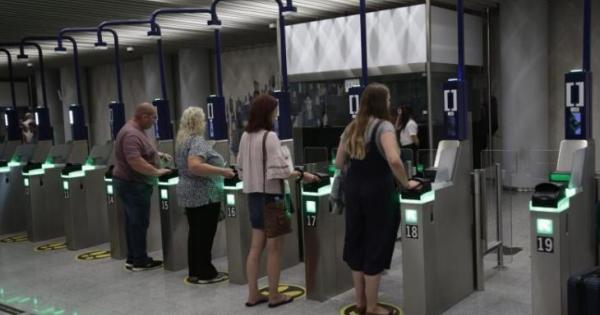Leading British travel expert and correspondent for The Independent, Simon Calder, told the Bulletin in Mallorca today, Wednesday, that the introduction of the new European entry and exit system this Sunday is not part of what people expected after Brexit. “From a travel perspective, we were told things were going to get better not worse and in the short term, it may turn people away to other destinations like Cyprus or Turkey until we get used to the new ID system,” he said.
This Sunday, October 12, marks the introduction of the new European Union EES entry/exit scheme and it could prove to be a very nasty trap for British and other third-party (non-EU) second home owners in Mallorca and across the Schengen Area in general. The new EES biometic system will automatically track when non-EU passport holders enter and leave the Schengen zone. From April it will replace the stamping of passports.
And, Brussels has told members states that once strict new entry procedures come into force they should rigidly enforce an existing 90/180-day rule and issue fines and bans to those who breach it.
Under the post-Brexit agreement, UK citizens without the right to work or reside in the EU or a member-state passport can only spend 90 days in a rolling 180-day period in the bloc.
Officials are said to have been “turning a blind eye” but are aware that some second-home owners are flouting the rules by overstaying – that is now going to stop. EES operations will start gradually. In the first few months, not all border points will collect data right away. Countries will slowly introduce biometric registration at airports, land borders, and seaports.
For example, Spain will begin testing on October 12 with passengers arriving at Madrid–Barajas–Adolfo Suárez Airport, adding land and sea borders later in the rollout. Other member states, such as Germany, will start at select locations like Düsseldorf Airport before expanding to more sites. By April 2026, all external border points in participating countries are expected to be fully operational.
For travellers from countries like the United Kingdom, the United States, Canada, Australia, and other non-EU nations, the EES adds a new layer of digital border control. Starting October 12, travellers entering the Schengen Area for the first time will register their biometric data – a facial image and fingerprints – at automated kiosks or border control booths. The system will create a digital record linked to their passport.
On future trips, facial recognition will confirm their identity, making the process faster. The EES will store each traveller’s data for three years, renewing the retention period with every border crossing. During the first six months, manual passport stamping will continue alongside EES registration. At first, only a small number of travellers will go through the full digital process while border authorities test and expand the system.
The introduction of the EES and ETIAS systems will impact various aspects of travel for British tourists:
1. Increased Wait Times and Administrative Hurdles
With biometric data collection, travellers should expect longer queues at airports and border crossings. This added layer of security could mean additional time spent on entering the EU. While the process is designed to be streamlined in the long run, travelers should factor in extra time to avoid missing flights or connections.
2. New Travel Planning Considerations
The need for prior ETIAS approval before departure will require more advanced planning. Tourists will no longer be able to make last-minute trips to the EU without first securing travel authorisation. Additionally, travelers must be prepared for the possibility of refusal if their background checks flag any issues. This new system adds a layer of uncertainty, especially for spontaneous travellers.
3. Impact on Short-Stay Tourism
UK tourists who regularly travel to Europe for short stays will be especially affected by these changes. The need to apply for an ETIAS before each trip, along with the additional biometric data checks, could deter some travellers. For those visiting multiple countries within the Schengen Area, the process may feel cumbersome.
4. Data Privacy Concerns
The biometric data collection required for both EES and ETIAS systems raises questions around privacy and data security. While the EU insists the data will be used solely for border control purposes, the increased collection of personal information could raise concerns for some travellers about how their data is stored and accessed.
